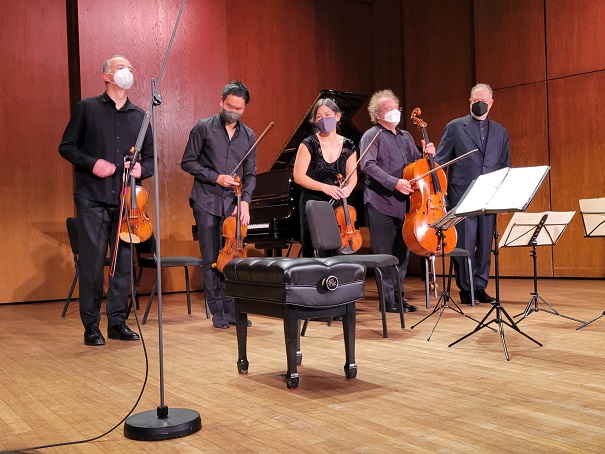Concert Diary: All Brahms at the 92nd Street Y
October 23, 2021
New York, N.Y.
My love of the music of Brahms developed relatively recently in my life. Call it a senior romance. And although I wouldn’t kick the symphonies or concertos out of bed, my real passion is for the chamber music, and particularly the piano quartets and various quintets. Which means that the concert this evening at the 92nd Street Y was like an orgy of musical pleasure.
The program consisted of just two powerhouse works: the Piano Quartet No. 2 in A Major (Op. 26) and the Piano Quintet in F Minor (Op. 34), composed fairly early in Brahms career in 1861 and 1864 respectively, about the same time that Americans were slaughtering each other in the Civil War. As is customary when performing these works, a pianist joins forces with a string quartet. For this concert, the Takács Quartet was joined by pianist Garrick Ohlsson, who performed all of Brahms’ piano music a couple years ago at the 92nd Street Y.
For the Opus 26 Piano Quartet, only 3/4 of the Takács Quartet were required: first violinist Edward Dusinbeere, violist Richard O’Neill, and cellist András Fejér. One of the things I like about the chamber music works of Brahms is that they often start deceptively light and simple, and then become denser and more twisty and intricate, the musical equivalent of “Well, that escalated quickly.” And because the music is so dense, a little change in emphasis here and there can make the pieces sound different and new, and it also helps if the musicians also perform the music with great clarity and precision. That was certainly true in this concert. I particularly enjoyed the second movement Adagio, which mixes lovely passages with strange disparate episodes. The rip-roaring finale rondo isn’t quite as fun as the finale of Brahms’ first Piano Quartet (what is?) but it comes close
For the Opus 34 Piano Quintet, second violinist Harumi Rhodes joined the ensemble. This is Brahms’ only Piano Quintet, starting off light and slow but soon introducing a passionate theme that then breaks apart and reassembles. So much seems to be going on that it’s surprising it’s as coherent as it is. The second movement Andante is another thing of beauty but without the strange episodes in the corresponding movement of the Opus 26 Piano Quartet. The third movement Scherzo struts all over the stage before revealing its own mysteries, and what about that sudden ending? I’ve never figured that out. For me the finale is the highlight, with a slow tense opening and a theme more tragic than anything previously before launching into another exhilerating dramatic rondo.
Here is the Takács Quartet and Garrick Ohlsson accepting well-deserved applause:
